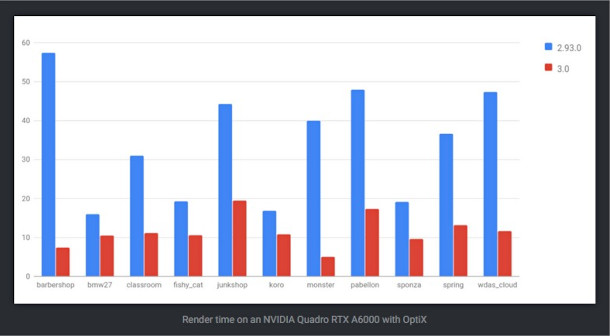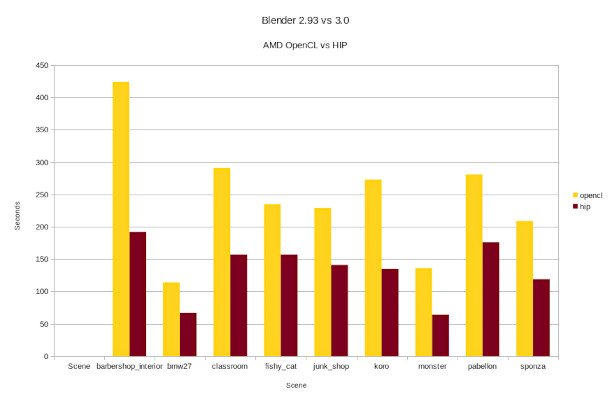Check out the new features in Blender’s Cycles X renderer

The Blender Foundation has posted a summary of the latest features in Cycles X, the much-anticipated rewrite of Blender’s Cycles render engine, ahead of its stable release in Blender 3.0 next week.
Changes since the initial alpha release include improved rendering of hair and fur, better handling of ambient occlusion and denoising, and support for micro-jittering.
Cycles X will also support AMD as well as Nvidia GPUs on Windows in Blender 3.0. Support for AMD GPUs under Linux will follow in Blender 3.1, along with a new Metal backend for macOS.

Improved performance, particularly with volumes and hair
First announced in April, Cycles X is a major rewrite of Blender’s main production render engine, intended to “future proof it for the next 10 years”.
Initial tests showed Cycles X rendering up to 7x faster than Cycles on the Blender benchmark scenes when running a Nvidia Quadro RTX 6000 GPU.
That maximum speed boost is slightly higher in the current build: the benchmark results in the blog post show Blender 3.0 rendering 1.5-8x faster than Blender 2.93 on Nvidia’s latest RTX A6000 GPU.
Certain types of scene benefit more, in particular those with volumes, since GPU volume rendering was not supported in the initial alpha builds of Cycles X.
According to the blog post: “Since then we have restored volume rendering, and found that GPU rendering performance improved 3-5x in various volume scenes.”
Handling of ambient occlusion and scenes with “many layers of transparent hair” has also been improved: you can find technical details and benchmark scores in the blog post.
In addition, support for denoising depth passes has been restored, and denoising of volumes improved.
Support for micro-jittering improves performance further when rendering on Nvidia GPUs under OptiX
The current builds of Cycles X also now support distance scrambling – also known as ‘micro-jittering’ – when using the Sobol or Progressive Multi-Jitter options to sample the lighting in a scene.
Users can set the distance scrambling value manually, or have Cycles choose a value automatically.
According to the Blender Foundation, distance scrambling can improve performance “in the range of 1-5%” when rendering on GPU, although it is only consistently a benefit when using the OptiX backend.
When using the CUDA backend, using automatic distance scrambling currently increases render times in the majority of the standard benchmark scenes.

Support for AMD GPUs now restored; native Metal support to follow
In addition, Cycles X now supports GPU rendering on AMD as well as Nvidia GPUs.
While initial builds were Nvidia-only, current builds support GPU rendering on AMD hardware via the HIP (Heterogeneous-Compute Interface for Portability) framework, which replaces Cycles’ old OpenCL backend.
To judge by the benchmark graphic included in the blog post, the maximum performance gains, while significant, aren’t as high as for Nvidia GPUs, with the standard benchmark scenes rendering 1.5-3x faster in Blender 3.0 under HIP than in Blender 2.93 under OpenCL.
As we previously reported, GPU rendering on AMD hardware will only be available on Windows in Blender 3.0, with Linux support to follow in Blender 3.1, along with a new Metal backend for macOS.
System requirements and release dates
Cycles X is already available in the daily builds of Blender 3.0, which is due for a stable release in early December 2021 for Windows, Linux and macOS.
Read more about the latest features in Cycles X on the Blender Developers Blog
